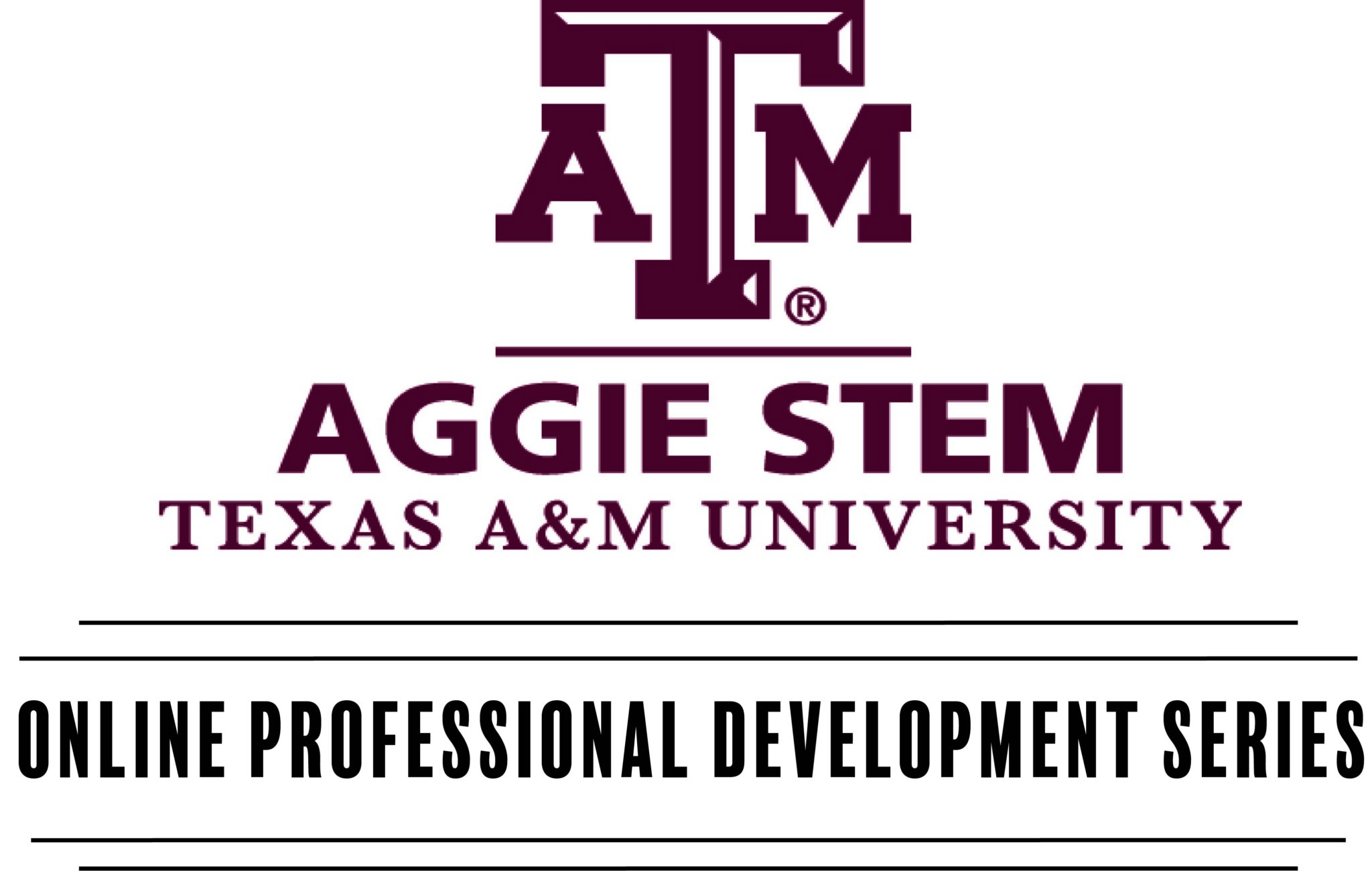These are the online professional development courses available through Aggie STEM. Click on the image for purchasing information.
Writing a PBL Part 1: What Standards Should I Cover?
This course helps guide you in determining the TEKS to be covered in your STEM PBL. What considerations are taken into effect in planning the writing of a STEM PBL? How can I fit a STEM PBL into the scope and sequence of my course? 3 Professional Development Hours.
Writing a PBL Part 4: Refinement and Differentiation
Creating STEM PBL is an iterative process. You will to continue refine the STEM PBL before and after implementation. You will have an opportunity to receive summative feedback before taking your STEM PBL to the classroom. Furthermore, you will explore how to differentiate activities for the needs of diverse students. 3 Professional Development Hours.
Implementing a STEM PBL: Benny’s Bee Business
Experience first-hand the implementation of a simple, short STEM PBL based on honeybees. This STEM PBL give you the flexibility to focus on one or more of the following subject areas: Mathematics, Science (Biology, Chemistry and/or Physics), English, and Social Studies. 6 Professional Development Hours.
Proportionality Concepts for Middle School
This content course was designed to address the teaching and learning of Proportionality Concepts. It builds pedagogically appropriate content that facilitates teaching to the standards for student success and teacher mastery. 3.5 Professional Development Hours.
Connections Between Representations of Linear Functions
Course content was designed to address fundamental concepts of the teaching and learning of linear functions. It builds pedagogically appropriate content that facilitates teaching to the standards for student success and teacher mastery. 3.5 Professional Development Hours.
Elementary Fractions
Teachers will be introduced to the Fearless Fractions program and will participate in an activity where they will fold up French fries to develop the concept of unit fractions. They will examine five models for gaining a rich understanding of representing fractional parts. 15 Professional Development Hours.
Elementary Problem Solving
Teachers will watch a video within the context of a marble problem and take note of effective strategies to elicit student thinking as they solve and pose problems. They will also play a game of “draw and discard” with their students and write a reflection. 10 Professional Development Hours.
Fearless Fractions Part A: The Quilt Project
Teachers will use Lessons #1 and #2 of Fearless Fractions to create a quilt using equivalent fractions. Lesson #1 emphasizes understanding fractions as a part of a whole using concrete models. Lesson #2 focuses on demonstrating understanding of equivalent fractions using concrete models.
Fearless Fractions Part B: Mock Tail Project
Teachers will use Lessons #3 and #4 of Fearless Fractions to create Mock Tails using equivalent fractions. Lesson #3 emphasizes understanding fractions in the simplest form using concrete models. Lesson #4 focuses on understanding of renaming mixed numbers as improper fractions using concrete models.
Fearless Fractions Part C: The Storyboard Project
Teachers will use Lessons #5 and #6 of Fearless Fractions to create a storyboard using equivalent fractions. Lesson #5 emphasizes understanding of renaming improper fractions as mixed numbers using concrete models. Lesson #6 focuses on understanding how to add and subtract fractions with “like” denominators using concrete models.
Fearless Fractions Part D: The Pizza Project
Teachers will use Lessons #7 and #8 of Fearless Fractions to create a storyboard using equivalent fractions. Lesson #7 emphasizes understanding how to add and subtract fractions with “unlike” denominators using concrete models. Lesson #8 focuses on understanding how to add fractions with either “like” or “unlike” denominators as well as how to subtract “like” or “unlike” without regrouping using concrete models.
TOT Microcontrollers
Participants will engage in a two-fold experience:
– Put together a circuit board and program it to flash lights and create movement.
– Learn the basics of circuits, electricity, engineering, and computing using Arduino.
– Focus on activities and lesson planning strategies for implementing a project-based STEM learning approach relying on building skills in programming and engineering.

